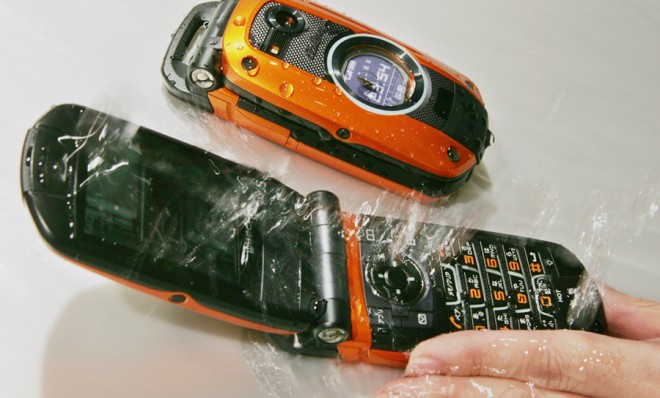Why aren't our phones waterproof yet?
The Galaxy S4 Active might be a sign of good things to come

On Tuesday, Samsung revealed a rugged new version of its flagship smartphone called the Galaxy S4 Active. Its defining feature is you can drop it in the toilet.
Aimed at people who spend a lot of time outdoors (or who perhaps just have clumsy hands in bathroom stalls), the Active is essentially a carbon copy of the S4 with fully sealed design that protects it from dust and water. According to The Next Web, its International Protection IP67 rating can "protect the internals against water damage for up to 30 minutes, at a depth of one meter."
The Active is notable namely because water-resistant phones are few and far between here in the U.S. (I would know.) There's the Sony Xperia Z, and a few others from Huawei. And Motorola's Droids come with SplashGuard, a liquid-resistant coating that wicks light moisture away.
The Week
Escape your echo chamber. Get the facts behind the news, plus analysis from multiple perspectives.

Sign up for The Week's Free Newsletters
From our morning news briefing to a weekly Good News Newsletter, get the best of The Week delivered directly to your inbox.
From our morning news briefing to a weekly Good News Newsletter, get the best of The Week delivered directly to your inbox.
You wouldn't know it, but waterproof technology has actually improved by leaps and bounds in the last few years. For just $60, companies like Liquipel can even apply a special nano-coating to make your phone's internal circuitry resistant to water.
Amazing, right?
So, if the technology has existed for a few years now, why aren't more phones — or all electronics, for that matter — built to withstand the elements? Why is water-proofing still a niche feature?
Part of it has to do with the cumbersome manufacturing process. According to Jared Newman at TIME, companies that employ similar nano-coatings like HzO and P2i are already working with phone-makers to bring the technology to the market. But while HzO's coating is "highly water resistant… its competitors say electrical currents don't transfer through the coating, and therefore requires a labor-intensive masking process," says Newman. Makes sense.
A free daily email with the biggest news stories of the day – and the best features from TheWeek.com
Another possible reason is a lack of public demand here stateside. In Japan, for example, waterproof smartphones have been a thing for awhile now. Panasonic claims, "Young Japanese women prefer to use their cellphones even when taking their showers." We should probably be glad that hasn't caught on here in the U.S.
Plus, if you're one of those rugged outdoor types, there are literally dozens of accessory companies willing to sell you a waterproof casing. Some are aimed at budding underwater photographers, while others are marketed to twentysomethings predisposed to party fouls. Even Urban Outfitters, purveyors of offensive kitsch, sells waterproof housing for iPhones for under forty bucks.
Then there's the ugly reality that companies can squeeze out a few more Benjamins from you in the event your phone takes a swim in the Pacific. Even though it used to be way stricter about its water damage policy, Apple will let you a buy refurbished iPhone of the same make for $199 if your old one fizzles out from moisture. While it beats having to sign up for a new contract, that's still enough cash incentive to be careful.
Some critics think it's better this way, too. Unless you "live on a boat," argues Stephen Schenk at Pocketnow, waterproofing doesn't make much sense for the average consumer. "I think one big reason smartphone waterproofing is seen as so desirable is because we don't want to have to be so careful with our expensive electronics; it's a license to be negligent, to an extent."
But waterproof phones are out there. The technology exists. And if we're lucky, maybe the Galaxy S4 Active is a sign of good things to come.
-
 Heavenly spectacle in the wilds of Canada
Heavenly spectacle in the wilds of CanadaThe Week Recommends ‘Mind-bending’ outpost for spotting animals – and the northern lights
-
 Facial recognition: a revolution in policing
Facial recognition: a revolution in policingTalking Point All 43 police forces in England and Wales are set to be granted access, with those against calling for increasing safeguards on the technology
-
 Codeword: December 14, 2025
Codeword: December 14, 2025The daily codeword puzzle from The Week
